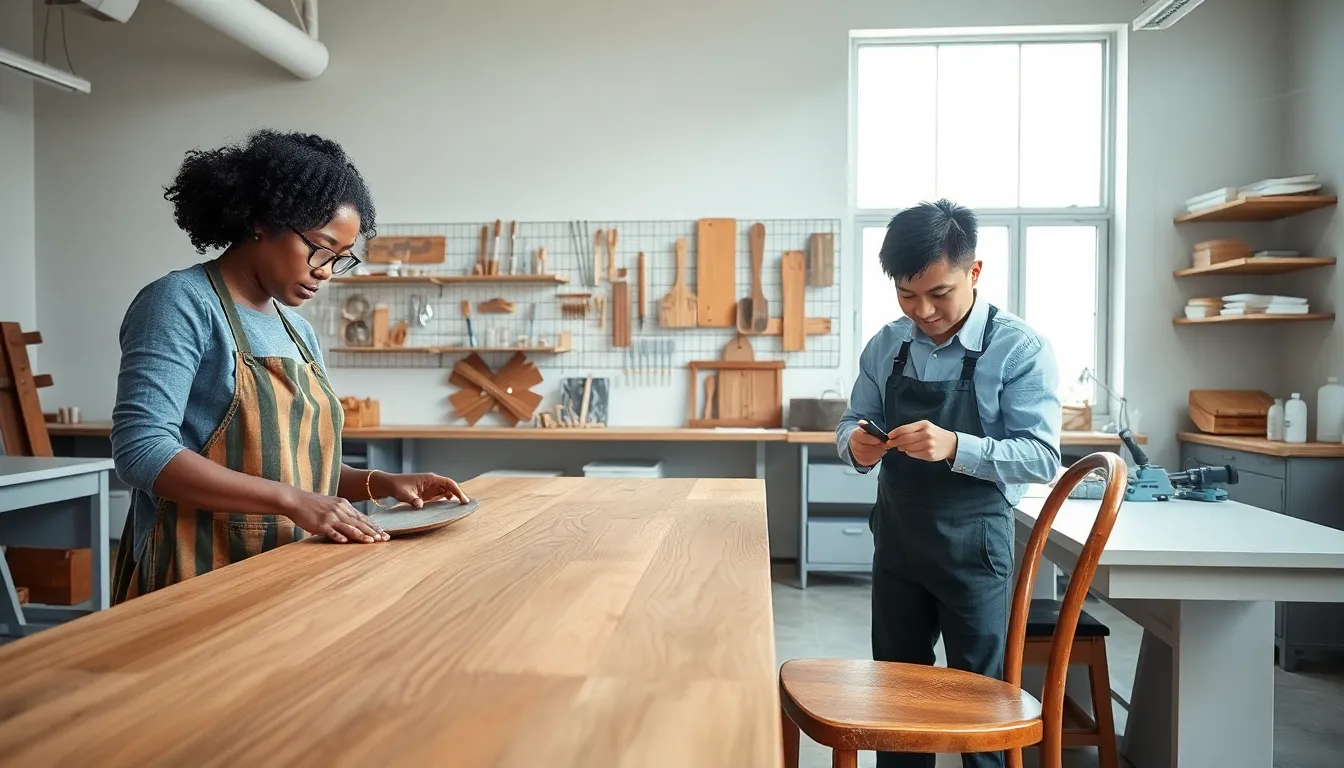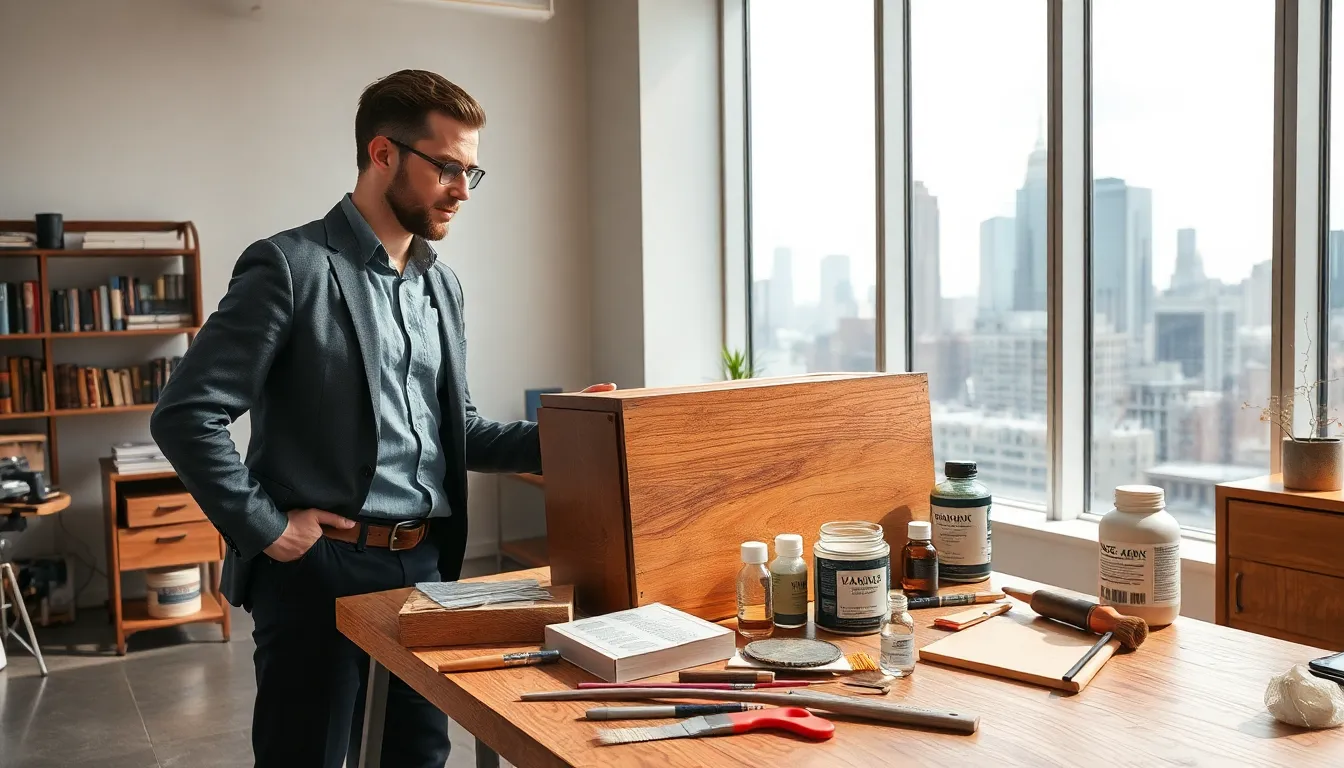Ever tried restoring something, only to find yourself knee-deep in confusion, dust, and paint splatters? Yeah, we’ve been there too. Thankfully, navigating the world of restoration alternatives doesn’t have to feel like a leap into the dark. With the right guidance, anyone can find smart solutions to bring their projects back to life. In this piece, we’ll uncover the top restoration alternatives that could save the day, without driving you up the wall.
Table of Contents
ToggleUnderstanding Restoration Needs

Restoration is more than just a buzzword: it’s a blend of art and science. From antique furniture to timeworn buildings, understanding the specific needs of what you’re restoring is crucial. Are you dealing with water damage, general wear, or perhaps even a mold crisis? Each scenario requires a different approach, and not every alternative will suit all cases.
Before diving into restoration options, one must assess the extent of the damage. Heavily damaged items may necessitate more intensive techniques, while minor wear might be easily remedied with simple touch-ups.
Also, the original materials and methods used in the item’s construction are key. For instance, restoring a wooden table? You’ll want to know if that was solid oak or a less sturdy veneer. Each type has its own quirks when it comes to restoration.
Summarizing, understanding restoration needs can set the stage for a successful project. It’s like knowing the rules before playing a game, play smart, and you’ll get ahead.
Key Factors to Consider When Choosing Alternatives
Selecting the right restoration alternative is akin to choosing your favorite pizza topping, there are endless options, but only a few truly satisfy.
First off, you must consider the cost. Restoration can range from a steep investment to a bargain basement deal. Weighing your budget against the quality of restoration method is essential. Sometimes, cheaper methods can lead to a false sense of security, resulting in further expenses down the line.
Next, think about the time involved. Some methods are quick fixes that yield immediate results, while others demand patience and finesse. Whether you’re knee-deep in a renovation project or just sprucing up a corner, timelines matter.
Then, there’s the skill required. Do you have the tools and expertise for a DIY approach, or will you be better served by engaging professional help? Knowing your capabilities can save you tons of frustration, and dollars.
Finally, don’t forget to consider the environmental impact. Our planet’s health is pertinent. Eco-friendly options are often available and can be incredibly effective without the environmental guilt.
Top Restoration Alternatives Explored
The market is brimming with restoration alternatives. Here’s a breakdown of the most popular options:
- High-quality Paints and Stains: A fresh coat of paint may work wonders. Quality paint can breathe new life into faded furniture. Stains allow you to maintain the wood’s natural beauty while rejuvenating its finish.
- Refinishing Kits: These kits are a go-to for restoring furniture surfaces. They include everything you need, from sandpaper to the final finish, allowing DIY enthusiasts to tackle projects without hiring a professional.
- Restoration Hardware: For the more luxurious items, brands like Restoration Hardware offer vintage-inspired pieces that can fill the gaps while blending with the decor of the restored item.
- Epoxy Resins: Ideal for structural repairs, epoxy resins are versatile and set strong. They can fill voids in wood or stabilize crumbling stone and brick.
- Natural Oils: For wooden furniture, natural oils like linseed oil or tung oil provide a traditional finish that nourishes wood, making it shine while protecting against moisture.
DIY vs. Professional Restoration Services
The age-old question: Should one tackle restoration independently or entrust the project to professionals? Each option boasts its advantages.
DIY restoration can be rewarding. It’s an opportunity to learn, bond over a shared project with family, and possibly save some cash. Taking the reins allows for creativity, letting one customize the process to fit personal vision. But, without proper skills or knowledge, it could lead to disastrous results, ever heard of a DIY gone wrong?
On the other hand, professionals bring expertise and experience. They understand the nuances of restoration, ensuring that the work aligns with industry standards and best practices. Also, they can spot potential hidden issues that a novice might overlook. While this service costs more upfront, it can prevent headaches in the long term.
Innovative Products and Techniques in Restoration
Innovation is the name of the game in restoration. New techniques and products are continually emerging, making the process faster and more effective.
Consider the rise of 3D printing technology. This technique enables the creation of custom parts for furniture restoration. An intricate leg of a table that’s been broken? No problem, 3D printing can craft a precise replacement that looks just like the original.
Also, thermal extraction has made waves, especially in fire-damaged materials. This method removes smoke and soot from belongings and furniture without using harsh chemicals.
Besides, products featuring enzymatic cleaners have become popular. They are biodegradable and extremely effective in treating organic stains, like pet accidents or food spills, making them favorites for home restorations.
Case Studies: Successful Restorations Using Alternatives
Examining real-life success stories can illuminate the countless possibilities that exist in restoration.
Take a vintage wooden rocking chair, for instance. A family’s heirloom, it fell into disrepair. By utilizing a high-quality refinishing kit, they restored its original charm while learning the craft through trial and error. The chair now sits proudly in their living room, a testament to a job well done.
Another example is a piece of artwork suffering from water damage. The owners consulted a professional restorer who successfully stabilized and cleaned it, using epoxy resin to refill the damage without compromising the original look. This restoration not only saved the artwork but also added to its value.
These cases show that the right restoration alternative, whether DIY or professional, can yield remarkable results.



